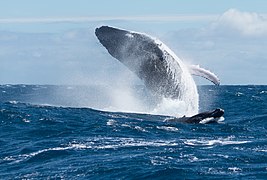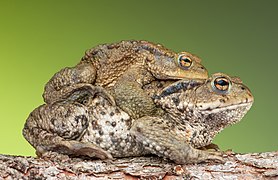Páigina percipal
|
Bienbenido(a) al L diretório de speces lhibre que todos puoden eiditar. Abrange Animalia, Plantae, Fungi, Bacteria, Archaea, Protista i todas las outras formas de bida. Anté aora tenemos 892 811 artigos. L Biquispeces ye lhibre, porque la bida stá ne l domínio público! Puodes cunsultar l nuosso Twitter: @Wikispecies Puodes cunsultar tamien l nuosso canal IRC: #wikispeciesconnect |
Nabegaçon de táxones
|
Coincer l Biquispeces
Colaboraçon cun ZooKeys Ua colaboraçon antre l Biquispeces i ZooKeys (ambora an anglés) fui anunciada. PhytoKeys juntou-se tamien a la colaboraçon an nobembre de 2010. Las eimaiges de speces de l ZooKeys i PhytoKeys seran ambiadas ne l Wikimedia Commons i outelizadas ne l Biquispeces. Outor çtinguido Francesco Redi Francesco Redi was an Italian entomologist, parasitologist and toxicologist, sometimes referred to as the "founder of experimental biology" and the "father of modern parasitology". Having a doctoral degree and in both medicine and philosophy from the University of Pisa at the age of 21, he worked in various cities of Italy. Redi is best known for his series of experiments, published in 1668 as Esperienze Intorno alla Generazione degli Insetti ("Experiments on the Generation of Insects"), which is regarded as his masterpiece and a milestone in the history of modern science. The book is one of the first steps in refuting "spontaneous generation", a theory also known as "Aristotelian abiogenesis". At the time, prevailing theory was that maggots arose spontaneously from rotting meat, which Redi was able to disprove. In an experiment, He used samples of rotting meat that were either fully exposed to the air, partially exposed to the air, or not exposed to air at all. Redi showed that both fully and partially exposed rotting meat developed fly maggots, whereas rotting meat that was not exposed to air did not develop maggots. This discovery completely changed the way people viewed the decomposition of organisms and prompted further investigations into insect life cycles and into entomology in general. It is also an early example of forensic entomology. In Esperienze Intorno alla Generazione degli Insetti Redi was the first to describe ectoparasites, such as lice (Phthiraptera), fleas (Siphonaptera), and some mites (Acari). His next treatise in 1684, titled Osservazioni intorno agli animali viventi che si trovano negli animali viventi ("Observations on Living Animals, that are in Living Animals") recorded the descriptions and the illustrations of more than 100 parasites. In it he also differentiates the earthworm (generally regarded as a helminth) and Ascaris lumbricoides, the human roundworm. An important innovation from the book is his experiments in chemotherapy in which he employed what is now called "scientific control", the basis of experimental design in modern biological research. Perhaps, his most significant observation was that parasites produce eggs and develop from them, which contradicted the prevailing opinion that they are produced spontaneously. Altogether he is known to have described some 180 species of parasites. See also: Distinguished authors of previous months. |
Species of the monthSociable LapwingVanellus gregarius (Pallas, 1771) Some facts about this bird: Head and body length: 27–30 cm. Wingspan: 70–76 cm. Weigth: 150–260 grams. Habitat: Breeds in steppes. Prefers sandy short grass plains and meadows during non-breeding season. Distribution: Breeds in northern and central Kazakhstan and south-central Russia. Diet: Chiefly feeds on insects. Surviving number: Estimated at 11,000. Conservation status: Critically Endangered (IUCN 3.1 [2024-2]) First described: By the German zoologist and botanist Peter Simon Pallas in 1771 as Charadrius gregarius.
See also: Species of previous months |
|
L Biquispeces eisiste grácias a la Fundaçon Wikimedia, ua antidade sin fines lhucratibos que admenistra porjetos an dibersas lhénguas i de cuntenido lhibre:
|






















